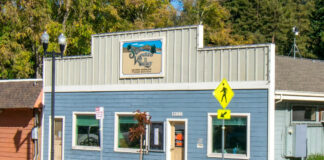I got an interesting call from the daughter of an old friend the other evening.
Dink was a true pal and a good riding buddy when we both lived in the Bay Area (with that nickname, you know he’s a big dude).
These days, he lives up in Placerville with a lovely wife and a fistful of daughters, one of whom was calling from the side of the road just north of Santa Cruz.
Dink’s oldest girl will be starting at California State University, Sacramento, in September, and she’d driven down to the school with a girlfriend to finalize her rooming arrangements.
In the logic that makes perfect sense to the young, when they were done, they decided to run on over to the Boardwalk — it being such a nice day and Santa Cruz being so close and all.
They’d just started back when the car got a flat tire. She thought there was a spare and then called me because she didn’t know how to change it.
She had a roadside-assistance card but didn’t want to use it because her dad would find out. They hadn’t told him they were coming to the coast, and could I help them, and please don’t tell him.
It’s not as unusual as it should be — these days, a staggering number of drivers don’t know how to change a flat tire.
Listen closely. If that applies to anyone in your family, make sure to have a little training and practice session sometime very soon.
Even non-drivers should know how it’s done. They may need to show or tell someone else sometime.
It’ll only take a half-hour or so and may prevent a minor and routine roadside problem from becoming a dangerous, traumatic or expensive issue. It’s info that can literally be life-saving.
In this case, it was just a matter of embarrassment for the girls from P-town, but despite many of us having a cell phone, AAA and even OnStar, anyone can find themselves stranded on the side of the road. And helplessness only makes it worse.
If you’re driving, the first thing to know is not to panic when you get a flat. Just take your foot off the gas and find a way to pull to the right side of the road — do not stop in the roadway and do not stop on the center divide.
If there is no shoulder, it’s generally safest to drive a short distance on the flat — at a speed of 5 to 10 mph — until you can pull out of the traffic onto a hard, level surface. After that, it’s all pretty simple.
If you need to familiarize yourself with the procedure before your tutorial, consult the owner’s manual for the car. (You won’t need to share that part.)
Start by showing everyone where the spare tire, the jack and the tire tool are located and how to remove them. Show them how to use the tire tool to pop off the hub cap, and — after reviewing the “rightie tightie, lefty loosy” rhyme — how to use leverage to loosen, not remove, the lug nuts before jacking up the car.
Show them the proper positioning of the jack, where the up and down lever is, and how easy it is to lift the car off the ground using the tool as a lever.
Explain how the hub caps make a great holder for the lug nuts, which can now be removed, how to pull off the old tire and slide on the new one without straining your back, and how the spare goes on with the air valve on the outside.
Demonstrate spinning the lug nuts back on, flip the jack lever and lower the car. Then emphasize tightening the lug nuts again before proceeding. And if the spare is one of those tiny donut deals, make it clear that they should only be driven on for short distances and slow speeds.
I went through that entire process with the girls on the side of Highway 17. They thanked me profusely, but I made Dink’s daughter give a solemn concession before agreeing not to tell her dad. She promised she would have a training session with her younger sisters when she got home.
Steve Bailey of Boulder Creek has spent plenty of time in recreational activities. Contact him at sb*****@****io.com.












